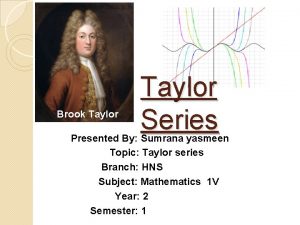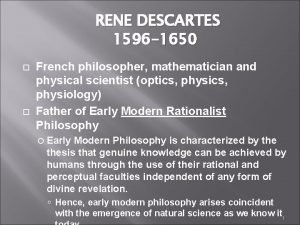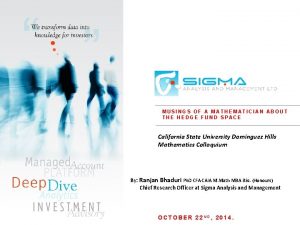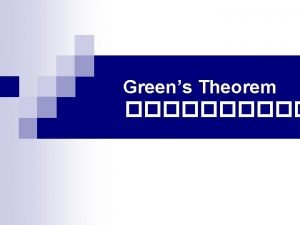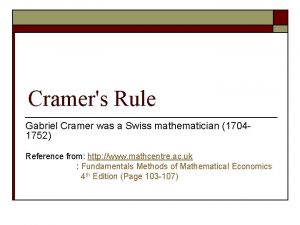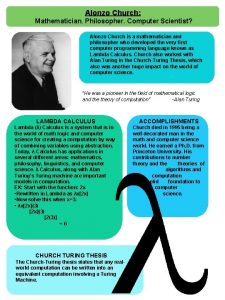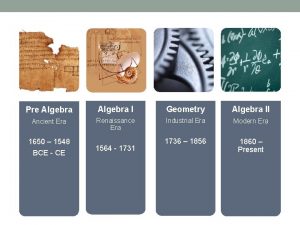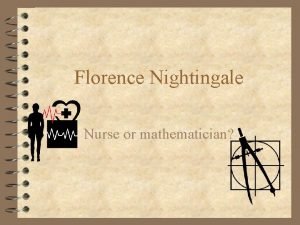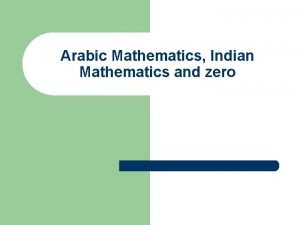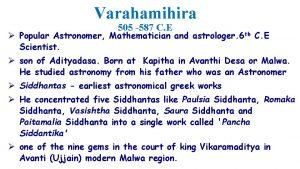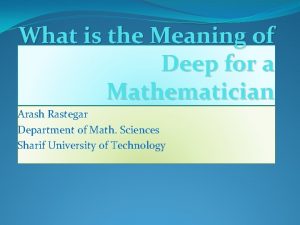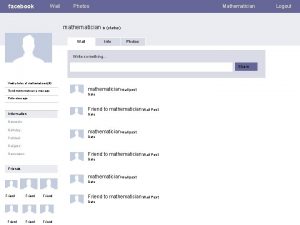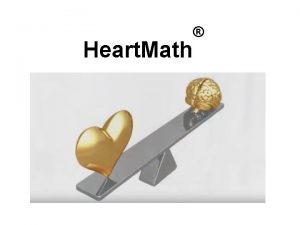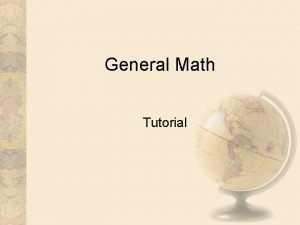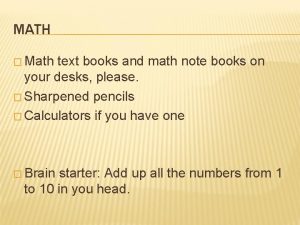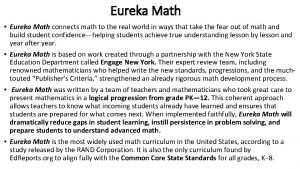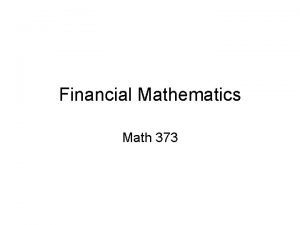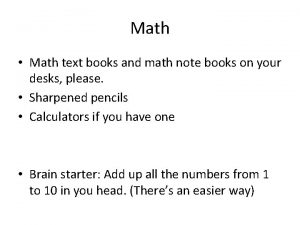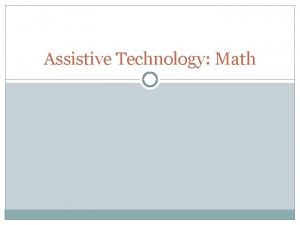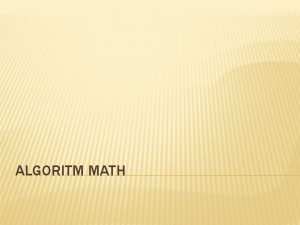Math vs Science To a mathematician mathematician 73























- Slides: 23


Math vs. Science • To a mathematician: mathematician 73 = 73. 000 etc. • To a scientist, scientist these numbers mean very different things.

Numbers in Science 1. Counts are exact and have an infinite number of significant figures. There are 31 desks in room 267 means 31. 000 desks.

Numbers in Science 2. Definitions are exact and have an infinite number of significant figures. 1 meter = 100 cm really means 1. 000 m = 100. 000 cm. 12 inches = 1 foot really means 12. 000 inches = 1. 0000 … foot

Numbers in Science 3. Measurements are never perfect and they have a finite number of significant figures. The number of sig figs in a measurement depends on the calibration of the measuring device.

What is Calibration? The calibration of a measuring device is the spacing between the two closest lines.

Reporting Data: The RULE Report one decimal place beyond the calibration of your measuring device. In other words: Report all the numbers you know for sure plus one that you estimate.

Calibration = 1 ml Calibration is to the one’s place so you report to the tenth’s place. source What’s the reading? 67. 5 ml You know the 60 and the 7 for sure. You estimate the 0. 5.

source Calibration is to the tenth’s place. You report to the hundredth’s place. What’s the reading? 373. 35 g

Glassware • Cylinder Movie • Buret Movie Volume 6, CCA

Interpreting Data (What it all means. )

Data 0. 9655 m Calibration Know the tenth, the Device was hundredth, and the calibrated to the thousandth for sure. thousandths _____ of a Estimated the tenmeter. thousandth. 1. 785 g Know the 1, the tenth, and the hundredth for sure. Estimated the thousandth. Device was calibrated to _____ of a hundredth gram. 13. 2 ml Know the 10 and the 3 Device was for sure. Estimated calibrated to the ones the tenths. _____ place.

Counting Sig Figs (Have to do this when you do calculations with data. )

Rules for counting sig figs 1. All non-zero digits are significant. 2. All captive zeros are significant. (Captive is a zero between 2 other sig figs. ) 3. Leading zeros are never significant. 4. Trailing zeros Decimal point significant No decimal point not significant

Once in a blue moon: _ 5300 cm • The middle zero is significant. • The ruler was calibrated to the hundreds place. • You estimated the 10’s place and it happened to land on a zero.

The Atlantic and Pacific Rule (A cheat for counting sig figs. ) Look to see if the number has a decimal point. Decimal point Absent = Atlantic Ocean Decimal point Present = Pacific Ocean

X X source

Decimal point present: • Start on the Pacific (left) side of the number. • Start counting at the first nonzero digit and count until the end of the number. 2545. 300 g has ? sig figs 0. 004530 km has ? sig figs 4 7

Decimal point absent: • Start on the Atlantic (right) side of the number. • Start counting at the first nonzero digit and count until the end of the number. 5400 m has ? sig figs 5431 m has ? sig figs 2 4

Calculations with Measurements Multiplication and Division The answer can have only as many significant figures as the measurement with the least number of sig figs.

24. 56 cm X 14 cm = a) 343. 84 cm 2 b) 343. 8 cm 2 c) 343 cm 2 d) 340 cm 2

Calculations with Measurements Addition and Subtraction The answer can have only as many decimal places as the measurement with the least number of decimal places.

422. 63 cm 29. 472 cm +________ 115. 9 cm a) 568. 002 cm b) 568. 00 cm c) 568. 0 cm d) 568 cm
 English is my favourite subject noun
English is my favourite subject noun Mathematician names
Mathematician names Most prolific mathematician
Most prolific mathematician Grigori perelman original paper
Grigori perelman original paper Yasmeen taylor
Yasmeen taylor Krystyna banach
Krystyna banach French philosopher mathematician
French philosopher mathematician Introduction of pythagoras theorem
Introduction of pythagoras theorem Hedge fund mathematician
Hedge fund mathematician George green mathematician
George green mathematician Italian physicist mathematician astronomer and philosopher
Italian physicist mathematician astronomer and philosopher Abe wald
Abe wald Liu hui mathematician
Liu hui mathematician Mathematician cramer
Mathematician cramer Millennium prize problems
Millennium prize problems Alonzo church
Alonzo church Francois viete
Francois viete Venkat subramaniam mathematician
Venkat subramaniam mathematician Florence nightingale slide
Florence nightingale slide Indian numerals
Indian numerals Varahamihira information
Varahamihira information Mathematician meaning
Mathematician meaning Hit the button
Hit the button National math and science initiative ap biology
National math and science initiative ap biology




